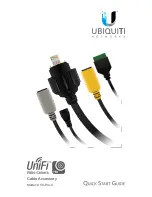
21
24
“End of run” downspouts
If a downspout exists at the end of the run of the roofline being treated, it is
recommended the cable be routed down the inside of the downspout and back up.
Do not wrap the cable around the downspout or attempt to attach it to the outside.
Pull cable into downspouts using weighted string. Be sure the run of cable is
flush with the end of the downspout and that no cable is extended out the end of
the downspout (see
Figure 24
). Remember: To avoid overheating the cable and
increasing the risk of fire or electric shock, no part of the downspout may pass
through a building.
If at this point you find that you have excess cable, triangles on the roof can be made
larger (up to 20 ft [6 m] in height) or cable loops in valleys can be extended.
If you have a shortage of cable (the end of the cable does not reach to the bottom
of the downspout), you may reduce the height of the triangles on areas of the roof
that are less susceptible to ice dams. It is permissible in this scenario to only have
a single run of cable in the end downspout, terminating at the end as shown in
Figure 24
.
WARNING: To reduce the risk of fire electric shock or ice dam forma-
tion, do not cut splice or alter the de-icing cable in anyway. The cable
length cannot be changed.
CABLE IN “END OF RUN” DOWNSPOUTS
Recommended
6
TIGHTENING THE CLIPS AND CABLE SPACERS
Tighten clips and spacers on the roof. You may do this with your fingers or with
pliers. If you use pliers, squeeze gently and use care to avoid pinching, crimping,
cutting into or otherwise damaging the cable (see
Figure 18
on page 18
). Do not
use a hammer to tighten the clips and spacers.
Check to be sure the cable has not been moved from its intended position. The
heated portion of the cable must be positioned entirely on the roof and must not
touch, cross over or overlap itself.
Alternative






































